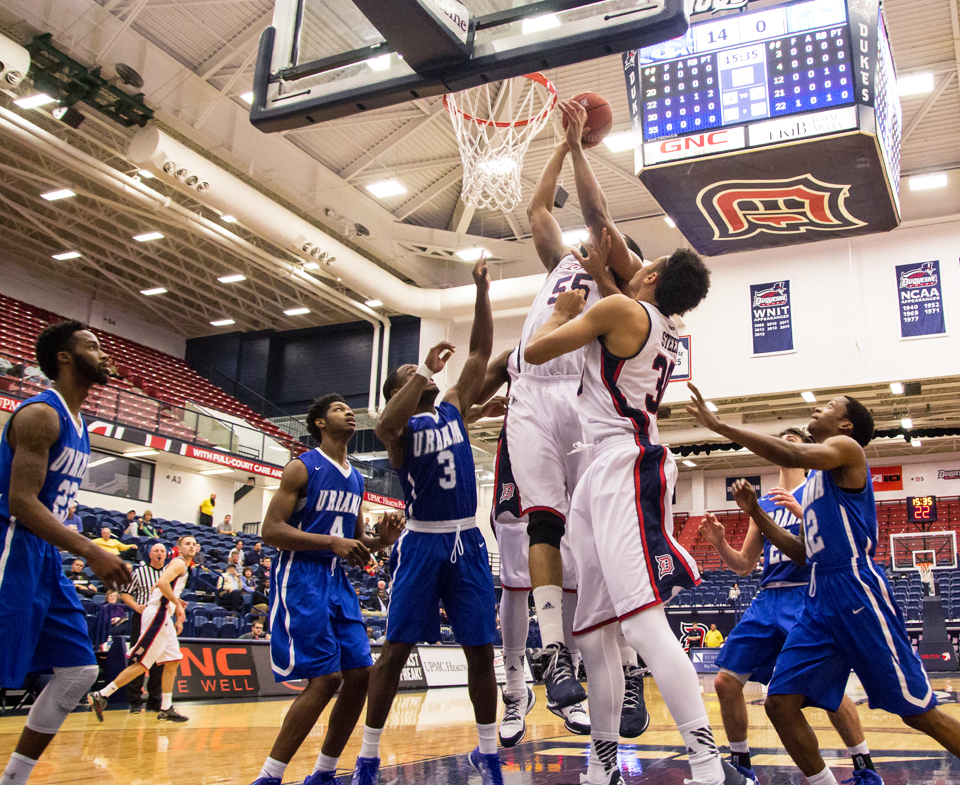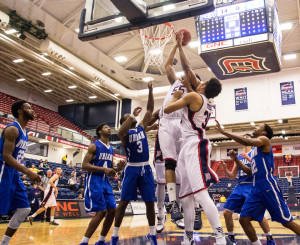

By Leah Devorak | Layout Editor
Duquesne’s history with basketball is long and diverse. Since officially going varsity back in 1914, the Dukes have experienced everything from championship winning teams to barely even making it out of last place.
It’s served to give the team an interesting story, but what most Duquesners don’t realize is that the trials and errors once faced aren’t all there is to it. What’s just as exciting are the tales of where those moments actually occurred.
It all started out like any other team: in the stereotypical campus gymnasium.
According to university archivist Thomas White, this gym was in the basement of the school’s chapel, and even though it was actually on campus, it was far from the ideal place to play.
Its floor was slanted, making it quite difficult to even dribble a basketball. Also, the court was much larger than regulation size, which caused the university to install a steel cage in the center of the floor in order to “fix” the problem.
Unfortunately, though, that solution didn’t work.
“It made many teams not want to face Duquesne at home,” White said. “So they struggled finding opponents for a while.”
In 1923, however, after years of slowly filling the chapel gym with other teams’ equipment rather than fans, the Dukes set out for a different home.
It was the then newly-built gymnasium where Rangos Hall is today. The Dukes used this as their home court for almost 20 years straight, as well as the facilities at McKeesport Vocational School and the Duquesne Gardens for most practices and a few special games, said White.
But as the years went on and the Dukes gained success, the new campus gym became too small, and things needed to change once more. So in 1948, the Dukes officially took over the Gardens.
Phil Musick, the late writer and former talk radio host, described the venue best in a 1988 memoir for the Pittsburgh Post-Gazette: “It was nowhere near Duquesne and it could never be mistaken for a garden … Respected by none; loved by a few; used by all.”
After that, the Dukes spent a few decades semi-homeless, using Pitt’s home court at the Fitzgerald Field House from 1956-64 and the Civic Arena from 1964-88 – when not simply playing at local high schools, of course.
From a monetary standpoint, the usage of the Civic Arena hurt the organization. According to ex-Duquesne history professor Dr. Joseph Rishel’s book, “The Spirit that Gives Life,” it cost around $7500 to rent per game, which meant that the university needed to fill 4500 seats just to break even for one night. At the time, that was nearly impossible.
To cut costs, in 1988, the university constructed the current home of the Red & Blue, the A.J. Palumbo Center.
Even though it caused a few issues during its construction, displacing around 430 parking spots and forcing the university to pay for 33,140 total passengers to be bused from the Civic Arena to campus, according to a 1987 Duke article, it seemed to pay off.


